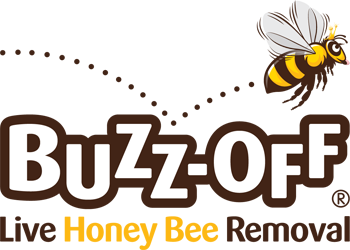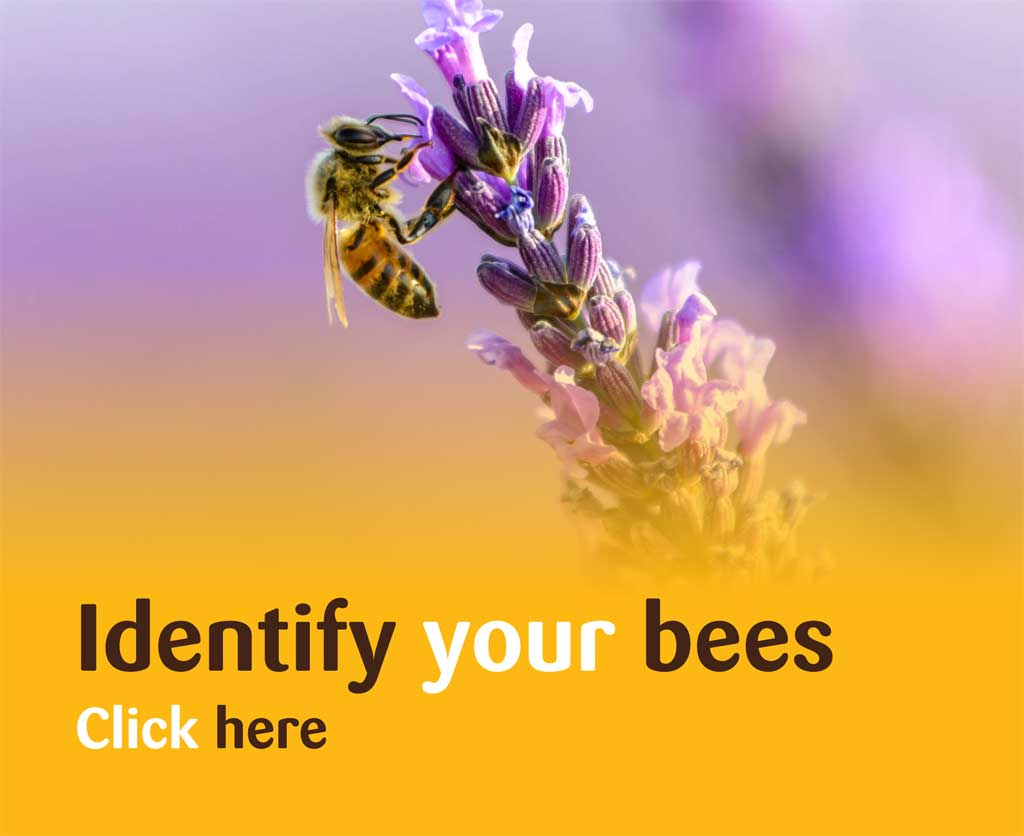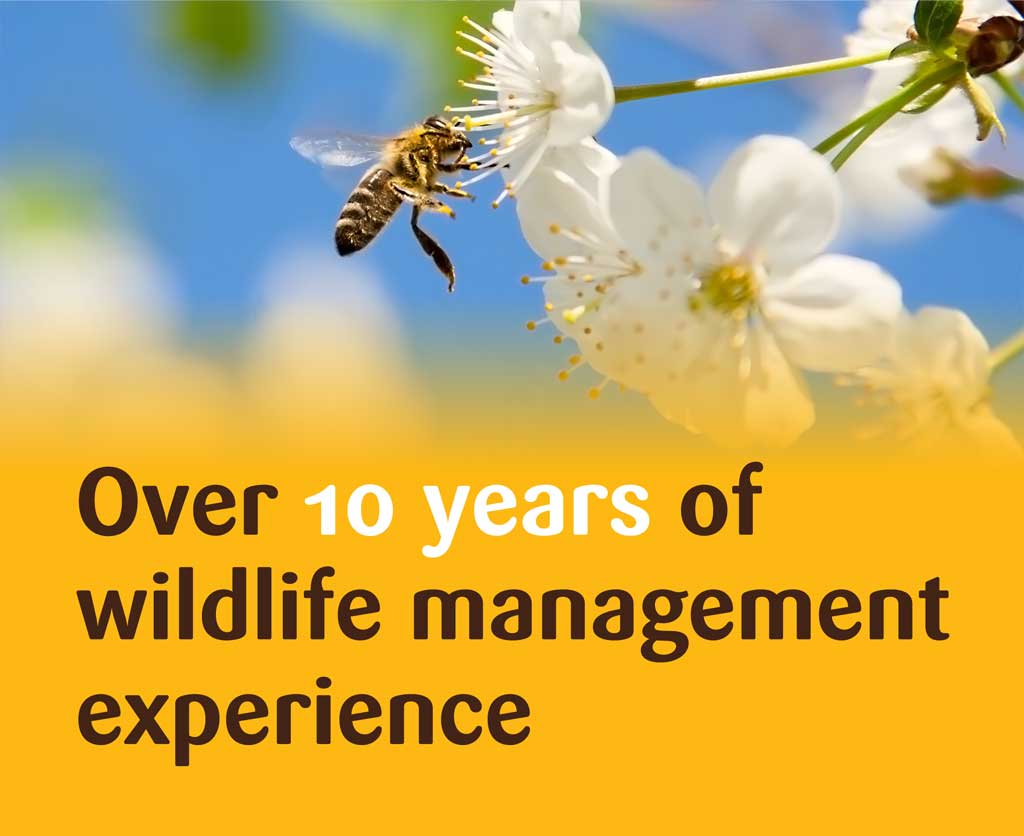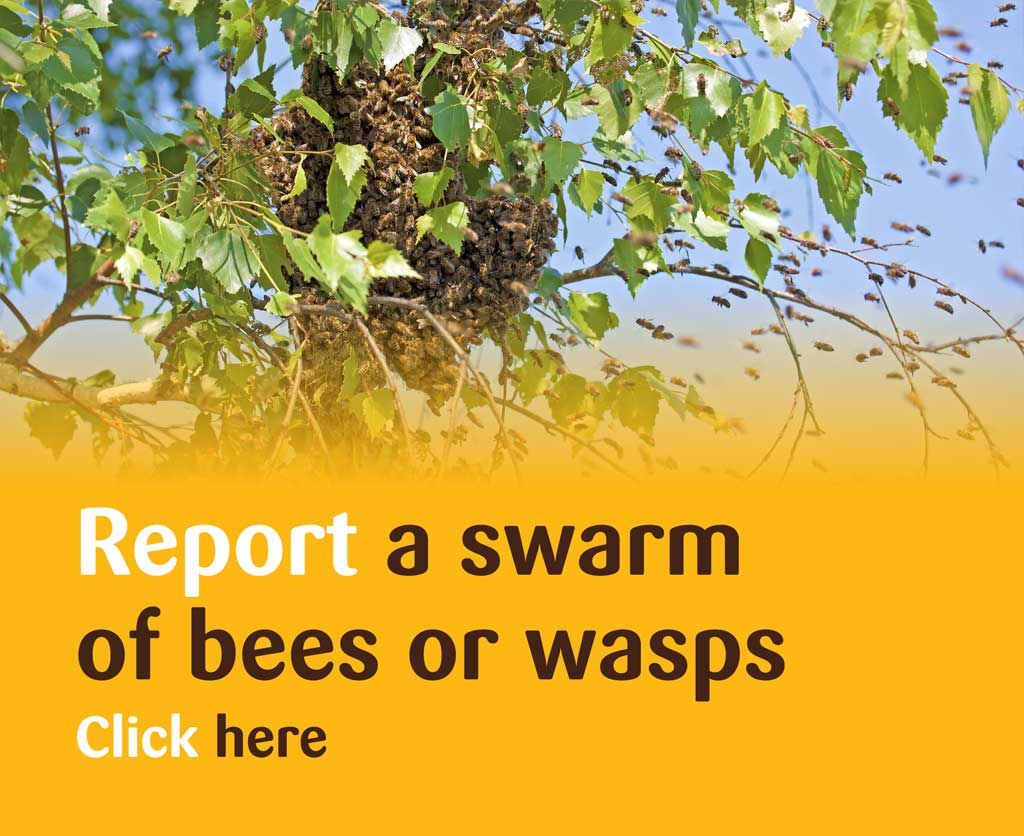-
 How and why we
How and why we
harmlessly remove
Honey Bees
Live Honey Bee Removal
Why do honey bees swarm and where do they go?
Swarming is a natural process in the life of a honey bee colony. A swarm is mobile because the bees are looking for a new location where they can make a honeycomb and establish a new colony. It occurs when a large group of honeybees leaves an established colony to establish a new one and will occur anytime between late May to September (depending on the weather).
When honey bees swarm, it is common for them to swarm onto bushes and trees. If a honeybee swarm is left and not collected quickly it could colonise chimneys, roofs or walls. If honey bee swarms move into structures such as walls or chimneys, they will need to be removed for health and safety reasons.
Removing honey bee nests from chimneys, cavities and walls whilst keeping the bees alive is a dangerous task and should only be carried out by a bee removal specialist and without the use of insecticides. Removing bees due to nuisance, structural damage or work prevention reasons, is not an easy job and isn’t as straight forward as treating other insect nests. The longer they are left the more comb they make and the more complex it becomes to remove them.
If the honey bee colony has been in residence in a property for some time, you may even notice a dark sticky substance running down the chimney, ceilings or walls – this is honey and evidence of a bee colony in residence.
Large numbers of bees within a colony can cause structural damage and become more problematic once a honeycomb structure has been created. Removing honey bee nests from chimneys, cavities and walls whilst keeping the bees alive is a dangerous task and should only be carried out by a bee removal specialist. Live bee removal does not involve insecticides. We need bees… without bees, there will be no Us!
These are a few things to consider if you have a bee colony in your property and why they should be removed:
- The potential presence of over 50,000 bees that can sting
- Some people have an allergic and life-threatening reaction to bees (anaphylaxis)
- Leaking honey damage to your property
- Falling materials due to structural damage
- Bees swarming and entering your living space
- Bees wax is flammable and is a fire hazard
- Bring a greater likelihood of the presence of foraging wasps & hornets
A honey bee colony will continue to grow each year. The average size of a honey bee colony in the summer is around 50,000 bees, which has the potential to produce around six litres of honey!
Honey bees can also become a problem when they swarm around or nest in trees. If the colony has settled inside a tree, a process called “trap-out” is attempted. This is where access to their colony is limited to just one entrance and the bees are then lured out with a bee box. Although this process can be time consuming and unreliable, in which case the tree will need to be cut away or cut down to keep the colony intact.
“Honey bees are vitally important for plant pollination but with the mass use of insecticides and pesticides they have become endangered. The U.N. have reported that of the 100 crop species that provide 90 percent of the world’s food, more than 70 percent are pollinated by bees. It is therefore vitally important that we take care of our bees.”
It is vital to take care in the removal of honey bee swarms because the honeycomb is a food source for the bees. Any contamination by pesticides or insecticides can have severe consequences – honey bees within a 3-mile radius will visit the site and also feed from the honeycomb and could die.
Bees, whilst not necessarily protected in the same way as other at risk species, do require special consideration with appropriate and efficient solutions. No chemicals currently identify or display bees on the label, while entrance treatments are highly unreliable and also ineffective against honey bees. These chemicals create more issues than they solve because dead bees create smells of decaying matter as well as secondary pest infestations, and honey residue running down walls, which will damage plaster and get into electrical systems.
The Pest Management Alliance Code of Practice: Relating to the Control of Bees (2016) states:
“Bees, both feral (semi-wild) and colonised, are important beneficial insects and are not normally considered as pests. They live either in the wild in nests as feral colonies or as colonies in hives managed by bee-keepers. In either case, they will only sting people if strongly provoked. Because of their beneficial role, every effort should be made to avoid carrying out control treatments against bees.”
How can we help you?
If you think you have a bee nest on your property that is causing problems, get in touch with Louise to arrange for a site visit and no-obligation quote:







